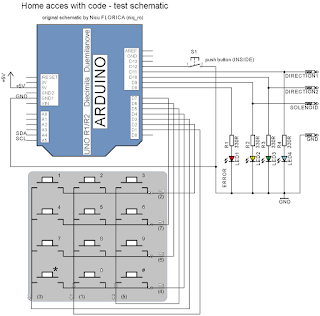After power the module, Arduino read and calculate vltage for AC main power supply and if is ok, coil relay is powered:
If push MENU/OK button, on display is SET
after 2-3 seconds, on display is undervoltage threshold, who cand change using + & - buttons:
After you push MENU/OK button, is displayed overvoltage thereshold, who cand change using + & - buttons:
After you pus MENU/OK buttons on display is delay-off time for reconnect coil relay after voltage is outside good range, also you can change value form 1 tp 20 seconds using + & - buttons:
After you push MENU/OK button, on display is main voltage:
I write main_voltage_3.ino sketch who made exactlly in picture, but it more easy to understund cases if you see under & overvoltage relay with Arduino movie
Bibliography:



















































